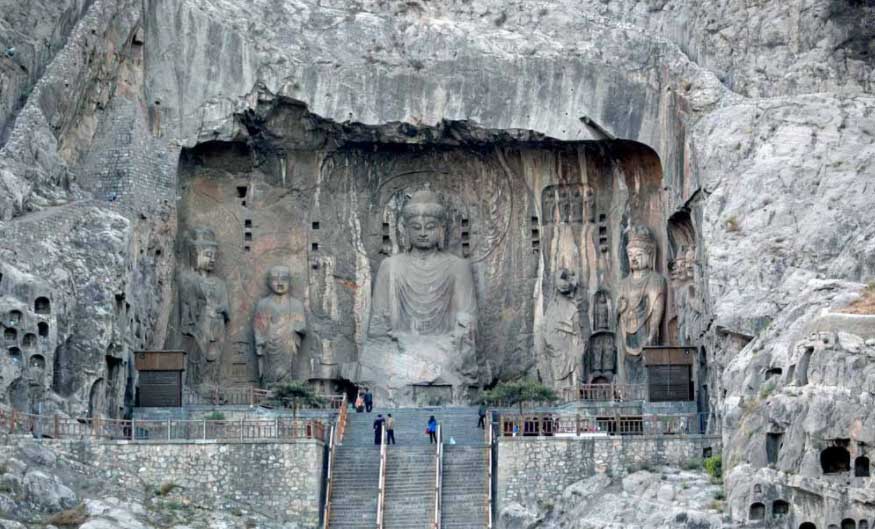Luoyang, an ancient capital of China, has played a significant role in the country’s history and cultural development. Its strategic location made it a crucial gateway to the Silk Road, the network of trade routes that connected the East and the West. Moreover, Luoyang is also known as the birthplace of Chinese Buddhism, highlighting its influence on the spiritual and cultural evolution of China.

- Luoyang and the Silk Road Situated in the central plains of China, Luoyang was a crucial hub for the Silk Road during the Han and Tang Dynasties. As a major economic and political center, it facilitated the exchange of goods, ideas, and culture between China and the West. The city’s prosperity during these periods was inextricably linked to its role in this extensive trade network. The flow of exotic goods, technology, and knowledge through Luoyang helped to shape its unique cultural landscape and fostered the growth of art, science, and religion.
- The Birthplace of Chinese Buddhism The White Horse Temple, established in 68 AD during the Eastern Han Dynasty, is considered the birthplace of Chinese Buddhism. As the first Buddhist temple in China, it symbolizes the introduction of Buddhism to the country and the subsequent fusion of this foreign religion with indigenous Chinese beliefs and culture. The temple was named after the white horse that, according to legend, carried sacred Buddhist scriptures from India to China. The arrival of these scriptures laid the foundation for the development of Buddhism in China, which would go on to have a profound impact on the nation’s spiritual and artistic life.
- The Longmen Grottoes: A Testament to Buddhist Art The Longmen Grottoes, a UNESCO World Heritage Site, are an outstanding example of Buddhist rock carvings and a reflection of the importance of Buddhism in Chinese society. Created between the 5th and 8th centuries, the grottoes contain thousands of intricate Buddhist statues and carvings that showcase the artistic excellence of the Northern Wei and Tang Dynasties. The site demonstrates not only the remarkable craftsmanship of the period but also the deep spiritual devotion that pervaded Chinese society during these times.
- The Spread of Buddhism along the Silk Road The growth of Buddhism in China was closely linked to the Silk Road, as the trade routes facilitated the spread of the religion across the continent. Buddhist missionaries, scholars, and pilgrims traveled along these routes, disseminating the teachings of the Buddha and establishing monasteries and temples throughout Central Asia and China. Luoyang’s position as a major Silk Road hub made it a focal point for the transmission of Buddhism from India and the subsequent development of distinctive Chinese Buddhist practices and art.
In conclusion, Luoyang’s position as a gateway to the Silk Road and the birthplace of Chinese Buddhism underscores its historical and cultural importance. As a vital hub for trade and the exchange of ideas, the city played a pivotal role in shaping the religious, artistic, and intellectual landscape of ancient China. From its bustling markets to its serene temples and breathtaking grottoes, Luoyang offers a fascinating glimpse into the nation’s past and a testament to the enduring influence of the Silk Road and Buddhism on its cultural heritage.